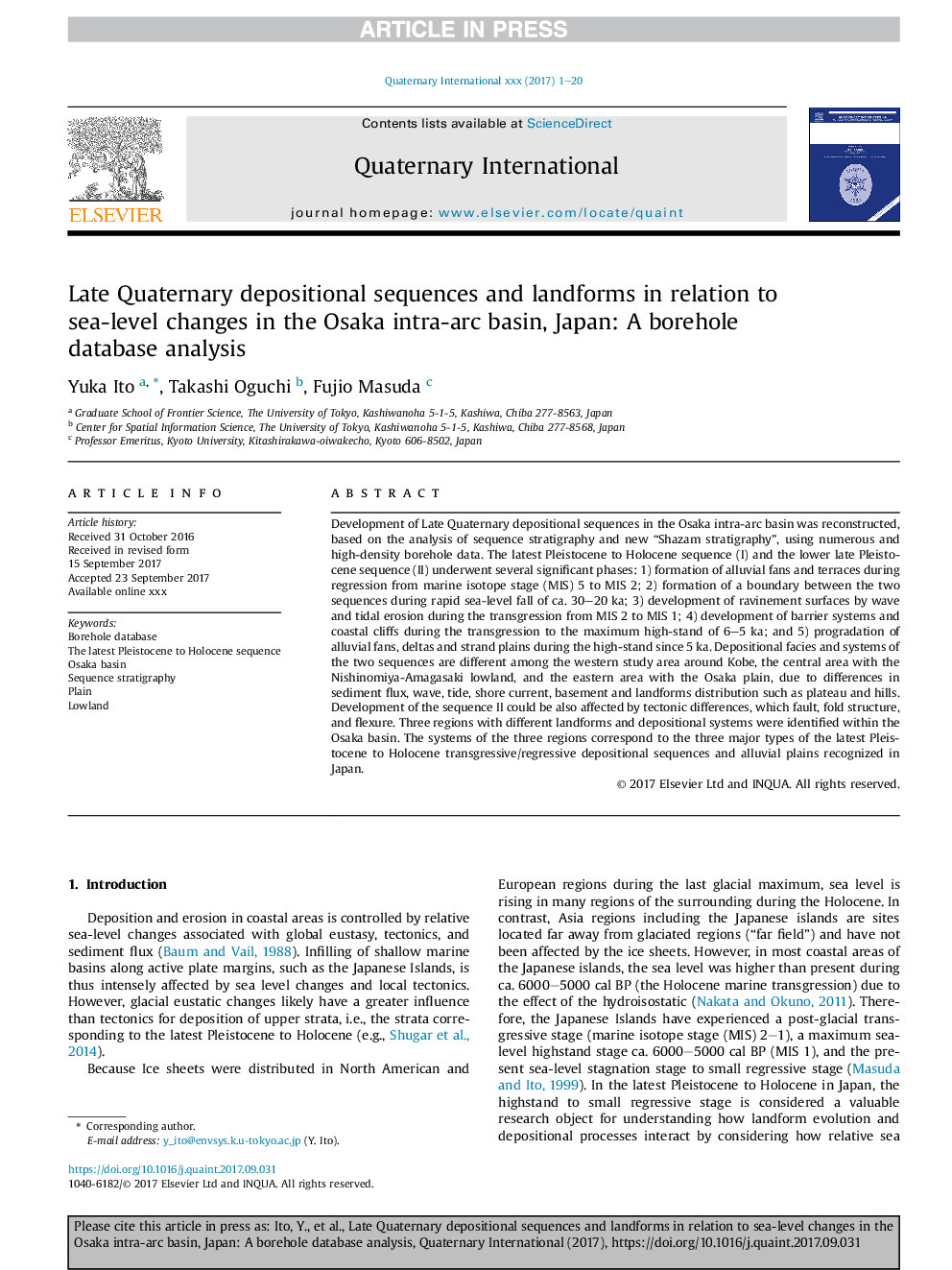| Article ID | Journal | Published Year | Pages | File Type |
|---|---|---|---|---|
| 7450007 | Quaternary International | 2018 | 20 Pages |
Abstract
Development of Late Quaternary depositional sequences in the Osaka intra-arc basin was reconstructed, based on the analysis of sequence stratigraphy and new “Shazam stratigraphy”, using numerous and high-density borehole data. The latest Pleistocene to Holocene sequence (I) and the lower late Pleistocene sequence (II) underwent several significant phases: 1) formation of alluvial fans and terraces during regression from marine isotope stage (MIS) 5 to MIS 2; 2) formation of a boundary between the two sequences during rapid sea-level fall of ca. 30-20 ka; 3) development of ravinement surfaces by wave and tidal erosion during the transgression from MIS 2 to MIS 1; 4) development of barrier systems and coastal cliffs during the transgression to the maximum high-stand of 6-5 ka; and 5) progradation of alluvial fans, deltas and strand plains during the high-stand since 5 ka. Depositional facies and systems of the two sequences are different among the western study area around Kobe, the central area with the Nishinomiya-Amagasaki lowland, and the eastern area with the Osaka plain, due to differences in sediment flux, wave, tide, shore current, basement and landforms distribution such as plateau and hills. Development of the sequence II could be also affected by tectonic differences, which fault, fold structure, and flexure. Three regions with different landforms and depositional systems were identified within the Osaka basin. The systems of the three regions correspond to the three major types of the latest Pleistocene to Holocene transgressive/regressive depositional sequences and alluvial plains recognized in Japan.
Keywords
Related Topics
Physical Sciences and Engineering
Earth and Planetary Sciences
Geology
Authors
Yuka Ito, Takashi Oguchi, Fujio Masuda,
